
|
JAPANESE PRINTS A MILLION QUESTIONS TWO MILLION MYSTERIES |
Ukiyo-e Prints浮世絵版画 |
|
Port Townsend, Washington |
|
|
None of the examples shown on this page or future tattoo pages is for sale - unless specified otherwise! |
|
|
BAD BOYS AND THEIR TATTOOS: TATTOOS IN JAPANESE PRINTS -3-
THIS PAGE TOO IS A WORK IN PROGRESS. COME BACK OCCASIONALLY TO SEE WHAT IS NEW.
|
|
|
|
|
|
FUDŌ MYŌŌ |
|
|
|
THIS IS A CHICKEN AND EGG ISSUE OR IS IT EGG AND CHICKEN? *** KUNIYOSHI AND THE ART OF TATTOO |
|
|
|
|
|
In the article on tattoos in the Kodansha Encyclopedia of Japan (vol. 7, p. 350) John E. Thayer III wrote under the heading "The Edo Explosion": "On the basis of such humble antecedents, it is not easy to explain the sudden and full-blown appearance of the uniquely Japanese 'full body' tattoo in the 1820s and 1830s."
Thayer argued that the time was ripe for the explosion in tattoo art. Class distinctions were becoming more pronounced. The warrior class had remained in power although it had grown financially poorer. By contrast there was an increasingly literate merchant class which was interested in bold colors and dramatic theatrical themes. "It was at this point, in 1805, that Takizawa Bakin began to publish...a translation of the Chinese picaresque novel know in Japanese as Suikoden...The Water Margin...which deals with the adventures of daring outlaws of the Robin Hood type. It was about this time that...Utagawa Kuniyoshi published the first five sheets of what was to become his most popular series, Tsūzoku suikoden gōketsu hyakuhachinin, '108 Heroes of the Suikoden.' Both book and prints were immediate successes. Significantly, 17 of the heroes were dramatically tattooed, a fact odd in itself, since tattoos are almost unknown among the Chinese." Soon other artists were illustrating tattooed heroes. "The tattoo boom had begun, in print and in person."
"The question remains whether it was Kuniyoshi (along with Bakin) who created the vogue of the full-body tattoo or whether he was only the publicist, stimulating, and giving direction to an existing trend. The answer might have been found in the tattooists' records destroyed by the Meiji police. But there is no question that it was Kuniyoshi who, with his bold colors and dramatic designs, set the canons of Japanese tattoo art."
PLEASE NOTE: While the image above is by Kuniyoshi it does not represent a Suikoden hero. At least I don't think it does. Whether it does or it doesn't isn't important here. What it does show is the fertility of Kuniyoshi's designs: Young Chinese boys holding fans surrounded by a field of flowers. What does it all mean? I haven't a clue. However, if I ever find out you will be among the first to know. |
|
JIZŌ The Saviour of Children & Those Suffering in Hell
|
|
|
|
While this is not an example of a tattoo appearing on a traditional Japanese print it is a contemporary masterwork of body art based on a 19th century print by an unidentified artist. To be honest there are very few ukiyo representations of Jizō to be found anywhere. So, for several reasons, and with the permission of the person who is the owner and wearer of this elaborate piece, we have chosen to add it to this page. It is too good to pass up.
Below is a photo of the full back tattoo showing the Jizō element as only a part of an integrated whole. This completion of this tattoo took several years. We want to thank the owner for letting us show it here in all its glory.
One further note: According to Robert Rhodes the original Sanskrit name for Jizō means "womb of the earth". Qutoed from: Kodansha Encyclopedia of Japan, vol. 4, p. 66. |
|
|
|
Joseph M. Kitagawa writes extensively about the Jizō cult in his Religion in Japanese History (Columbia University Press, 1966, pp. 82-85). "Jizō was not a prominent bodhisattva originally, even though he was mentioned in the Sutra on the Buddha Names, in which Buddha enumerates Buddhas, bodhisattvas, and pratyekabuddhas, to the number of 11,093. Jizō became important as he came to be closely affiliated with Amida in China wheere he was known as Ti-tsang (the Treasure-chamber of the world)." Like Amida [阿弥陀 or あみだ] Jizō vowed not to attain Buddhahood "...until the last soul in hell might be redeemed." By the time of the T'ang dynasty Jizō represented a compassionate and gracious bodhisattva in the under world to whom the living prayed for the salvation of their deceased relatives.
In the earliest representation of Jizō in Japan he played a completely subsidiary role. "Actually, [his] importance was recognized only after Kūkai [空海 or くうかい] founded the Shingon [眞言 or しんごん] school early in the Heian period. Jizō found some prominent devotees, including the Emperor Seiwa and some court ladies..."
Like all religious figures there was a degree of syncretism mixing native beliefs in their kami or gods and that of the recently imported Buddhist pantheon. This was particularly true for the lower classes. The aristocrats looked to the Amida cult and its heavenly salvation. They already lived lives of privilege and could only conceive of things getting better while the peasant classes lived lives of deprivation and hardship from which they could only imagine the torments of hell. Hence, worship of Jizō became their means of salvation.
"As the divinity of the poor, Jizō took over the role of the traditional 'kami of the road' (Sae-no-kami or Sai-no-kami) who was believed to guard the turning points of highways." Naturally, by way of extension, the actual road became the road of life and beyond. "Even today the Japanese countryside is dotted with stone statues of Jizō, either at the roadside or in the neighborhood of akago-zuka (infant mounds). Evidently in the old days dead infants were buried in those unpretentious mounds, in the belief that they would be born again soon." And here is the kicker! "In the course of time, Jizō came to be regarded as the special protector of infants and children who had died - a function for which he was never held responsible in China." |
|
|
|
A PIÈCE DE RÉSISTANCE A HOKUEI MASTERPIECE
THIS FOUR PANEL MASTERPIECE IS ONE OF MY FAVORITES OF ALL JAPANESE WOODBLOCK PRINT CREATIONS
THE TWO END PANELS BOTH DISPLAY ELABORATELY TATTOOED ACTORS
SNAKES & DRAGONS
DOES IT GET ANY BETTER THAN THIS? SOME MAY THINK SO. SOME MAY PREFER KUNIYOSHI SUIKODEN IMAGES, BUT I LIKE THEM BOTH!
This Osaka tetraptych dates from ca. 1835.
I HAVE A FEW QUESTIONS FOR YOU.
WHAT KIND OF MAKEUP DID THEY USE TO PAINT THE BODIES OF THESE ACTORS?
WAS THIS KIND OF MAKEUP APPLIED DIFFERENTLY THAN THE STANDARD PROCESS?
HOW LONG DID ONE APPLICATION LAST? DID THEY HAVE TO REAPPLY IT EVERY DAY FOR EACH NEW PERFORMANCE? ***
VERISIMILITUDE
If anyone out there knows anything about this technique would you please fill me in. Dean J. Schwab in his Osaka Prints (pp. 172-3) notes that these four panels illustrate a scene from a play which was never staged. So, not only does it represent a scene with two tattooed figures which never took place, but the tattoos are not really real. They are stage craft - or would have been if they had actually shown a genuine performance.
This four-panel composition raises all kinds of puzzling issues. Although this is not the place nor the time to wrestle with them it does not change the fact that actors more than likely decorated their bodies with faux tattoos. The illustration of Benten Kozo Kikunousuke on our first "Bad Boys and Their Tattoos" page is a case in point. Click on the name above to see what we mean.
I can't help think of all of those interminable interviews with actors and directors who lament the time it took every day to put on their makeup for such movies as "Planet of the Apes" or "Star Wars". Or, were they bragging?
My friend M. gave me permission to use these prints. Thanks M! |
|
LIONS AND TIGERS AND BEARS OH MY!
AND DRAGONS AND FISH AND GODS AND FLOWERS AND LIGHTNING AND TOMOES AND SCROLL DESIGNS AND WAVES AND MONKEYS AND A HELL OF A LOT OF OTHER THINGS TOO! |
|
|
|
|
|
PEONIES AND WAVES |
|
|
|
|
|
TOMOE DRUMS AND LIGHTNING |
|
|
|
|
|
THE MONKEY KING AND HIS HAIRY MONKEY ARMY |
|
|
|
|
|
IT TAKES A REAL MAN TO WEAR FLOWERS |
|
|
|
|
|
LEAPING FISH |
|
|
|
|
|
EMMA-O KING OF HELL |
|
|
|
|
|
LIONS AND PEONIES |
|
|
|
A JOCK SPARROW AND HIS IMPRESSIVE TATTOO
|
||
|
|
|
|
|
|
|
|
|
|
|
|
| If the image above this one weren't unusual enough for you here is a detail from another Kuniyoshi print where all of the figures of daily life are portrayed by sparrows. The fellow to the left is a common laborer who is bringing up the back end of a kago or palanquin. Note the elaborate body art on that muscular dude....errrrr...I mean sparrow. Not a sight you see everyday, eh? | ||
|
A REMARKABLY BIZARRE IMAGE WITH A SUBTLE TATTOO
|
||
|
|
|
|
|
|
|
|
|
|
The image shown above is one of the most creative and exotic uses ever of a tattoo in a Japanese woodblock print. Designed by Kuniyoshi in ca. 1848 it not only shows the features of a man whose face is composed of a group of near naked bodies packed together like a group of fraternity brothers trying to cram themselves into a phone booth, but it also displays the tattoo on the left shoulder of one who forms the upper lip in a most subtle and creative way. |
|
|
|
||
| This image was sent to us by our generous contributor E. and for that we are extremely grateful. | ||
|
CLICK ON THE POLYNESIAN WOMAN WITH THE TATTOO TO GO BACK TO THE FIRST BAD BOYS PAGE |
|
CLICK ON THE DRAGON TATTOO IN PROGRESS TO GO BACK TO THE SECOND BAD BOYS PAGE |
|
Any questions or comments? Please contact us. |
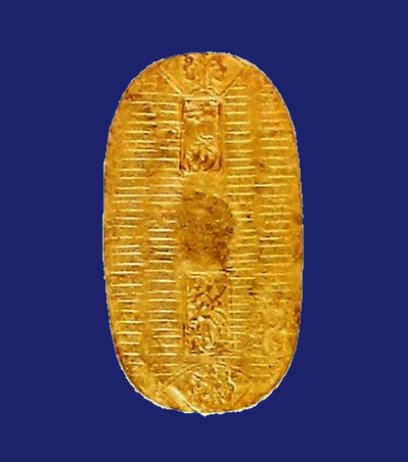
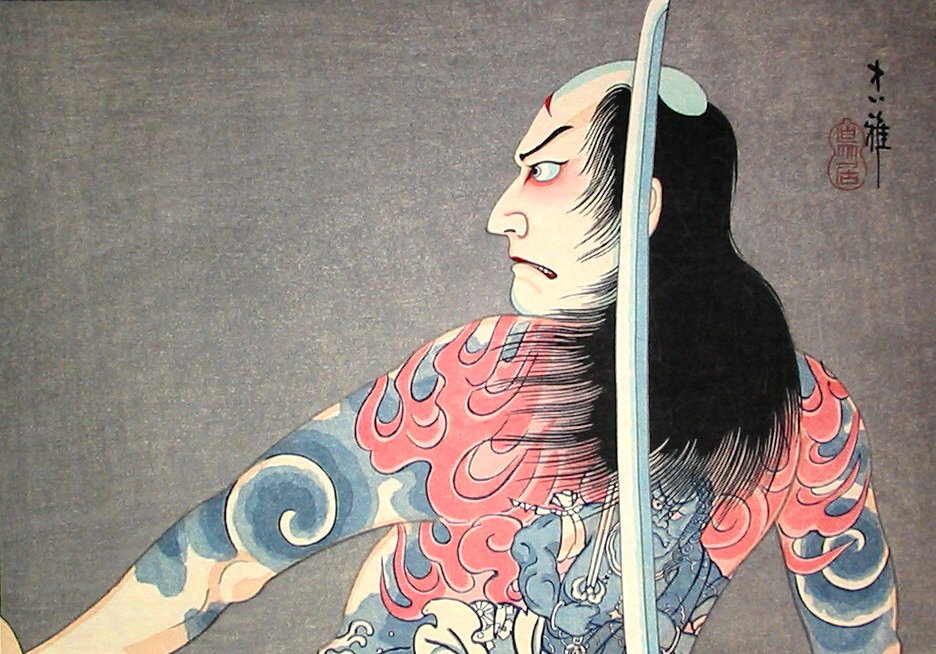
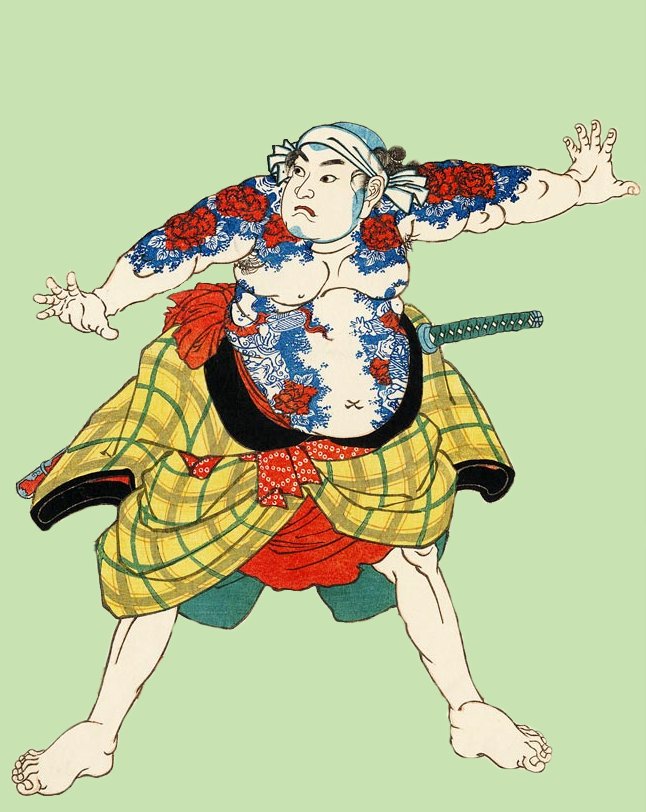
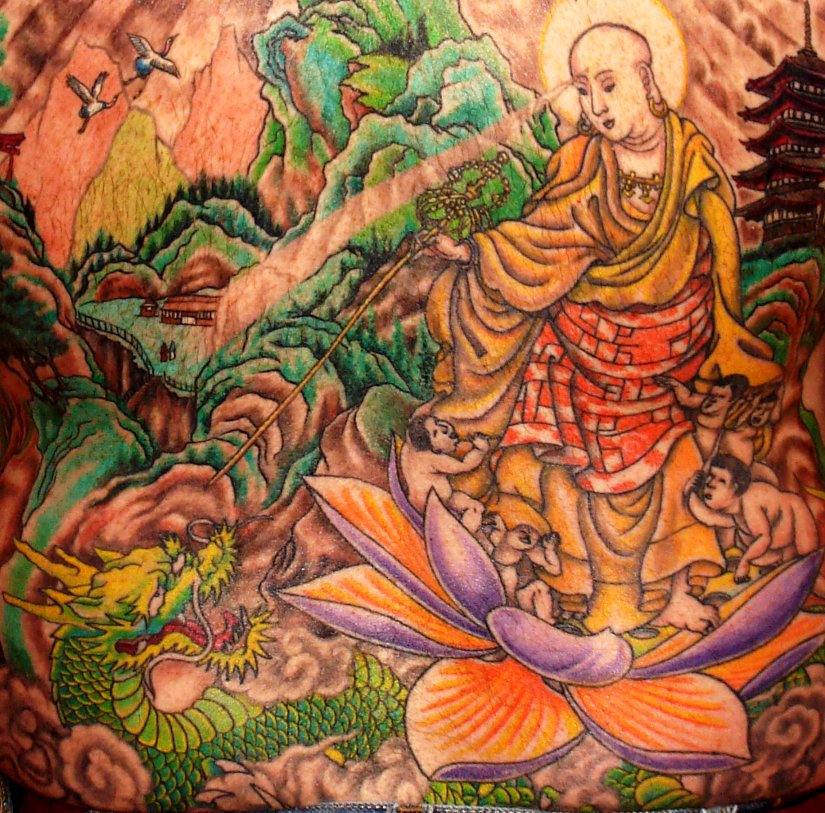
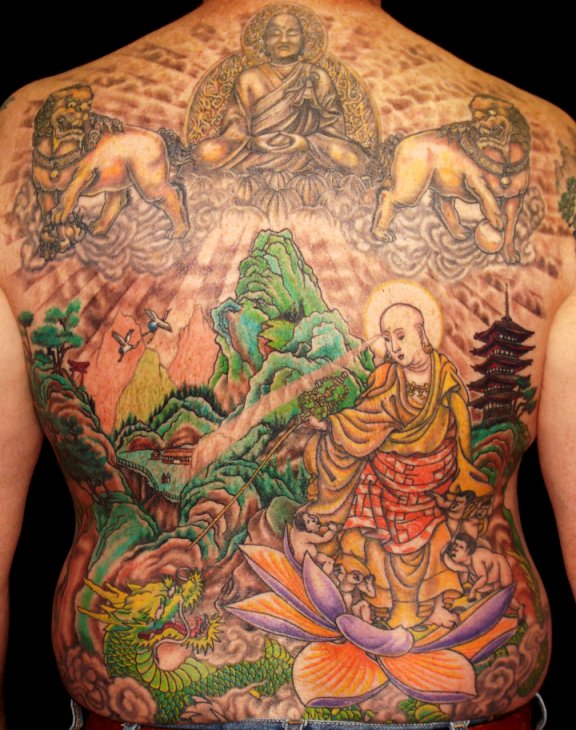
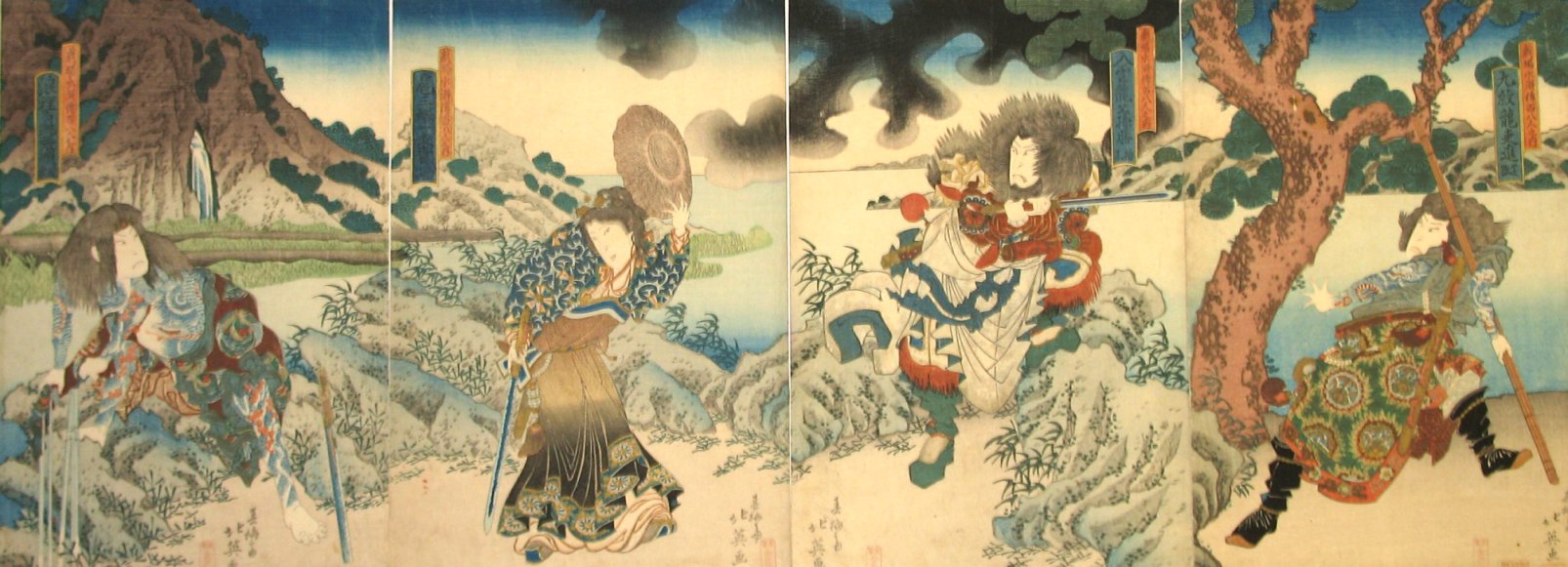
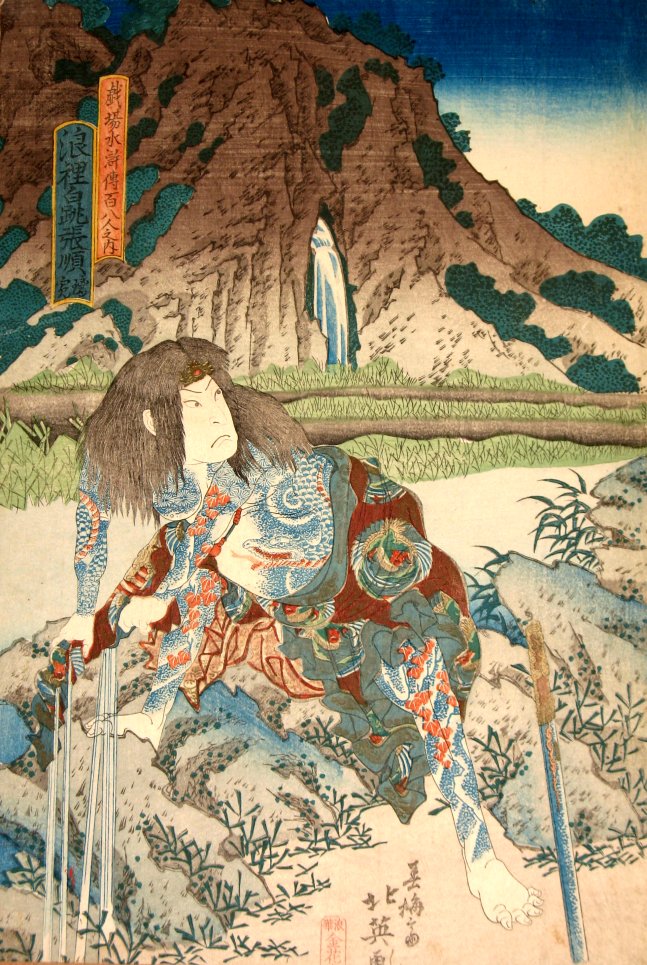
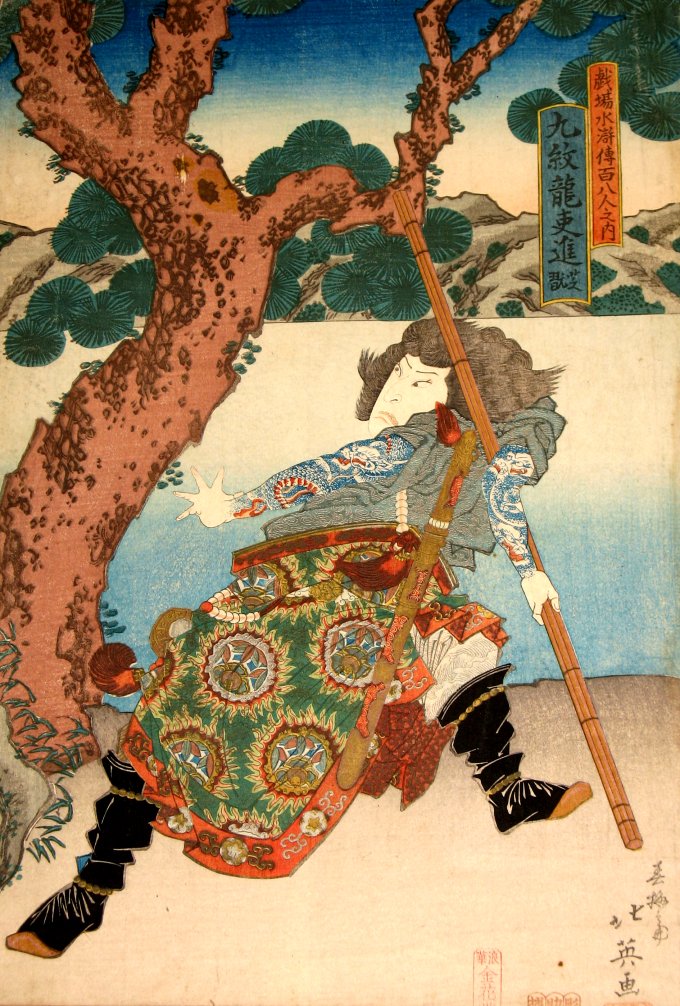
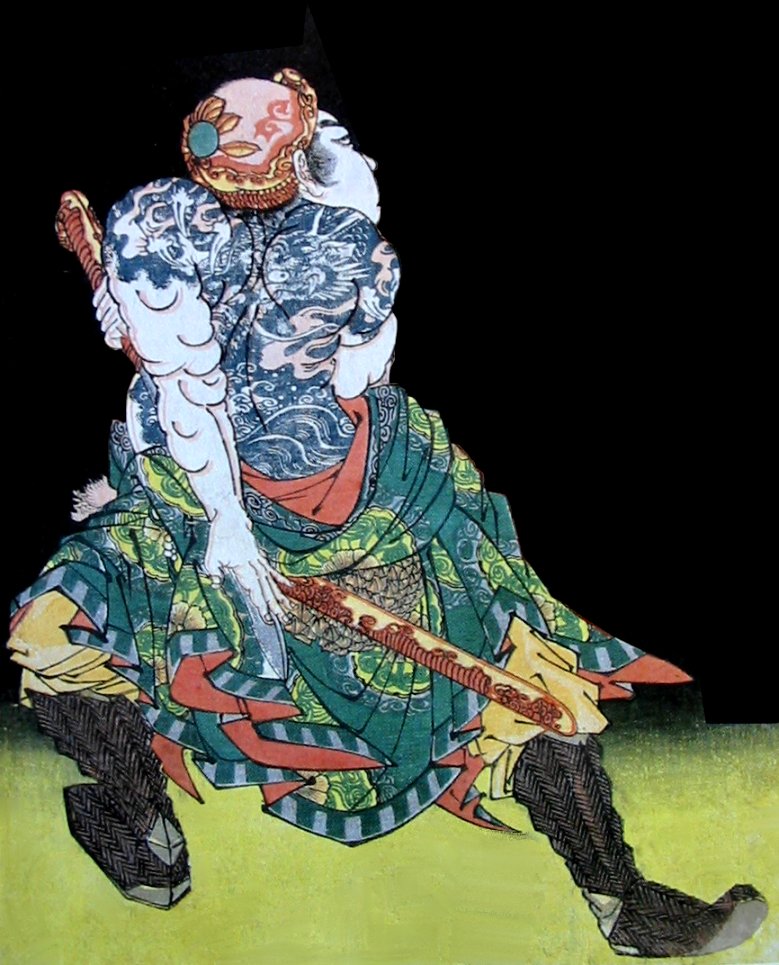
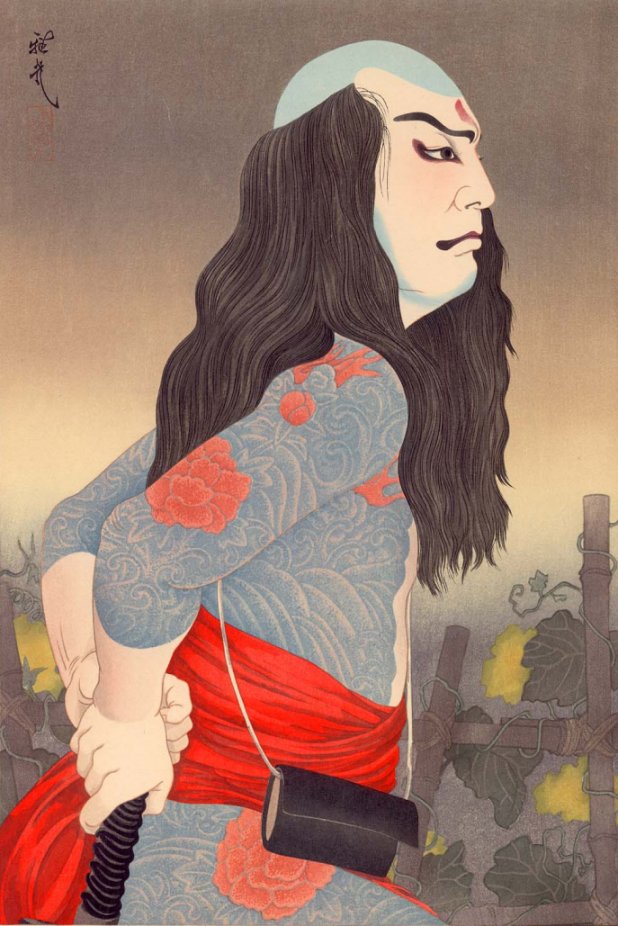
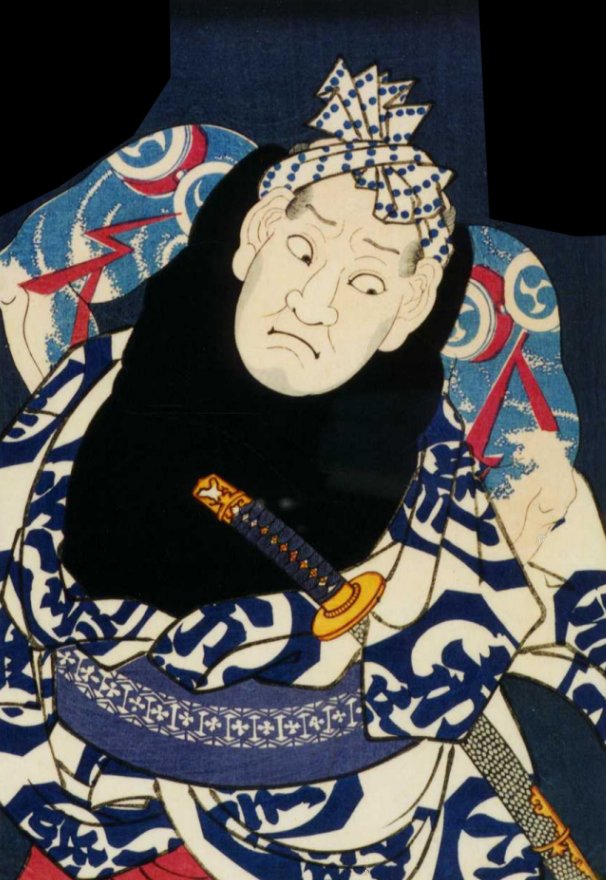
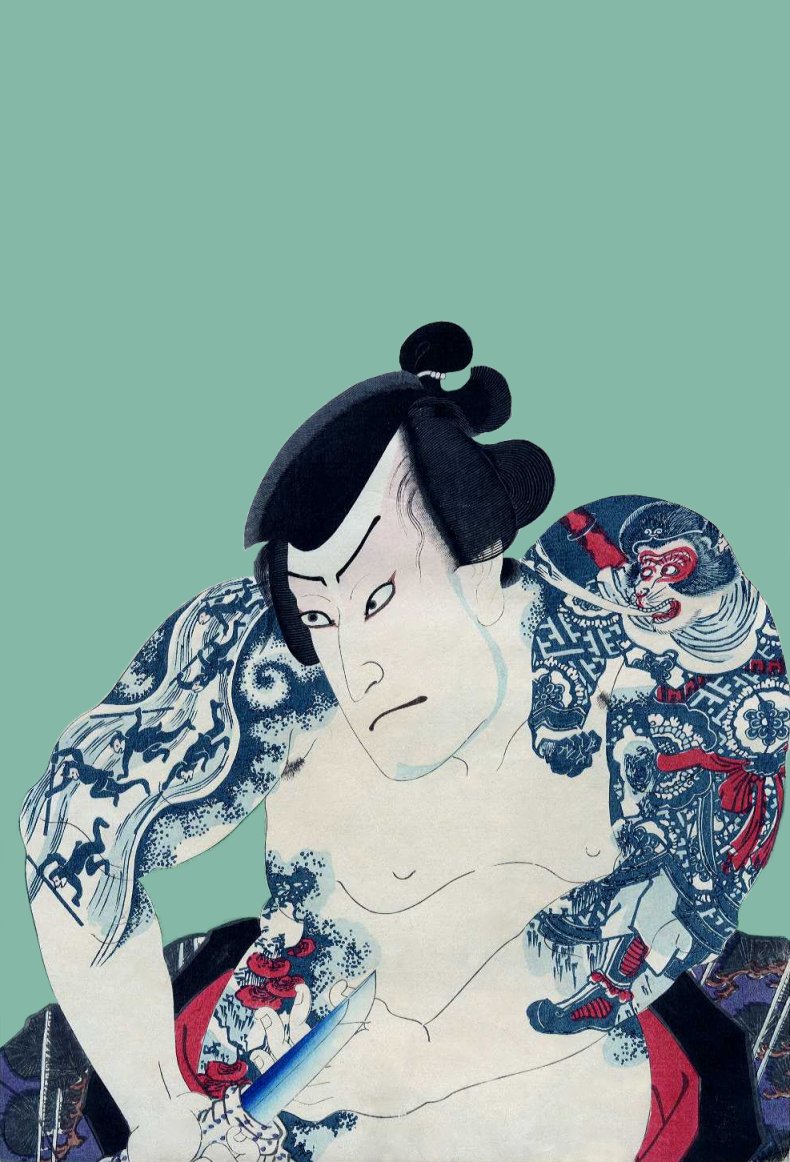
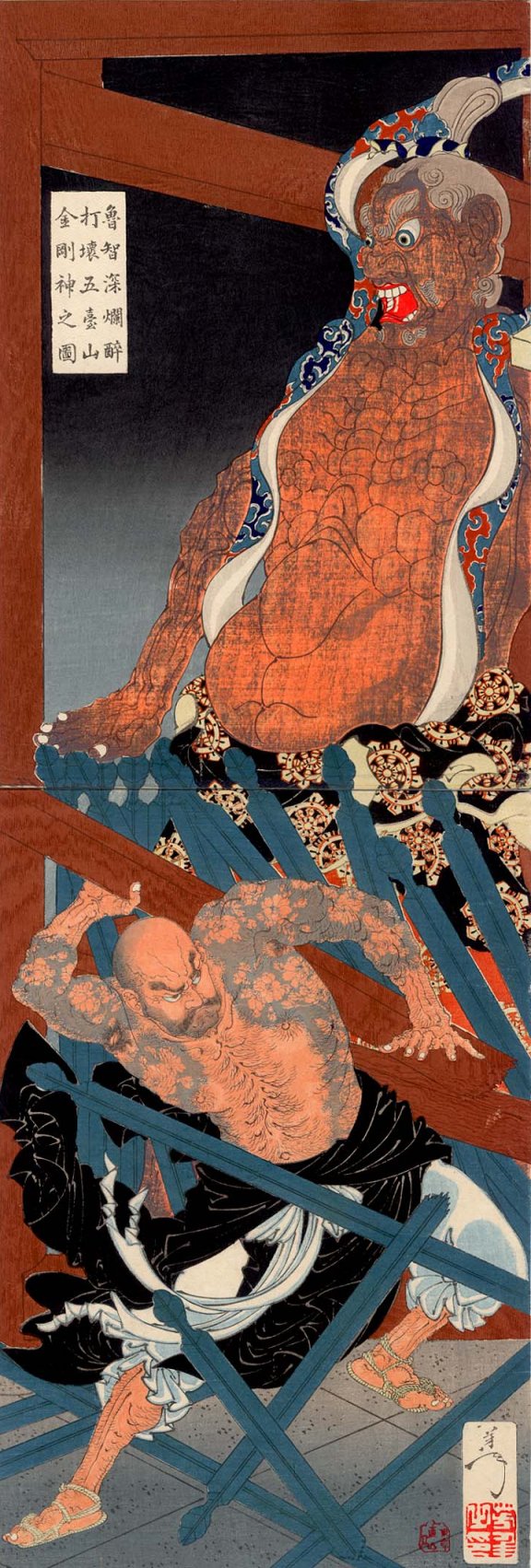
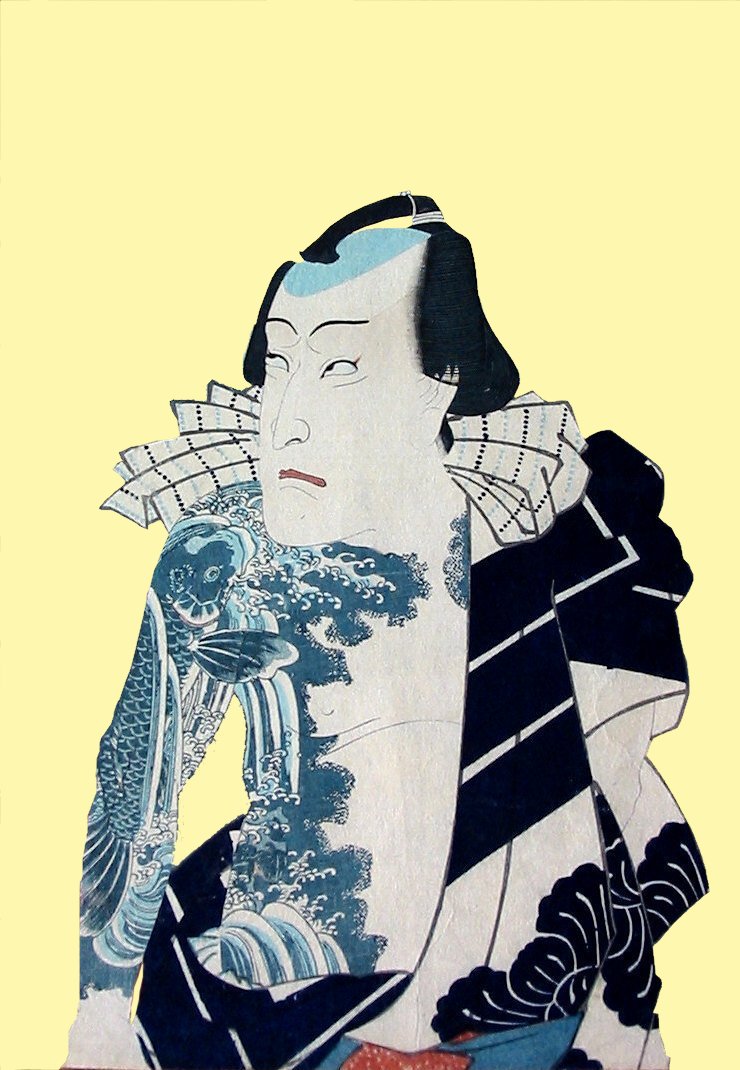
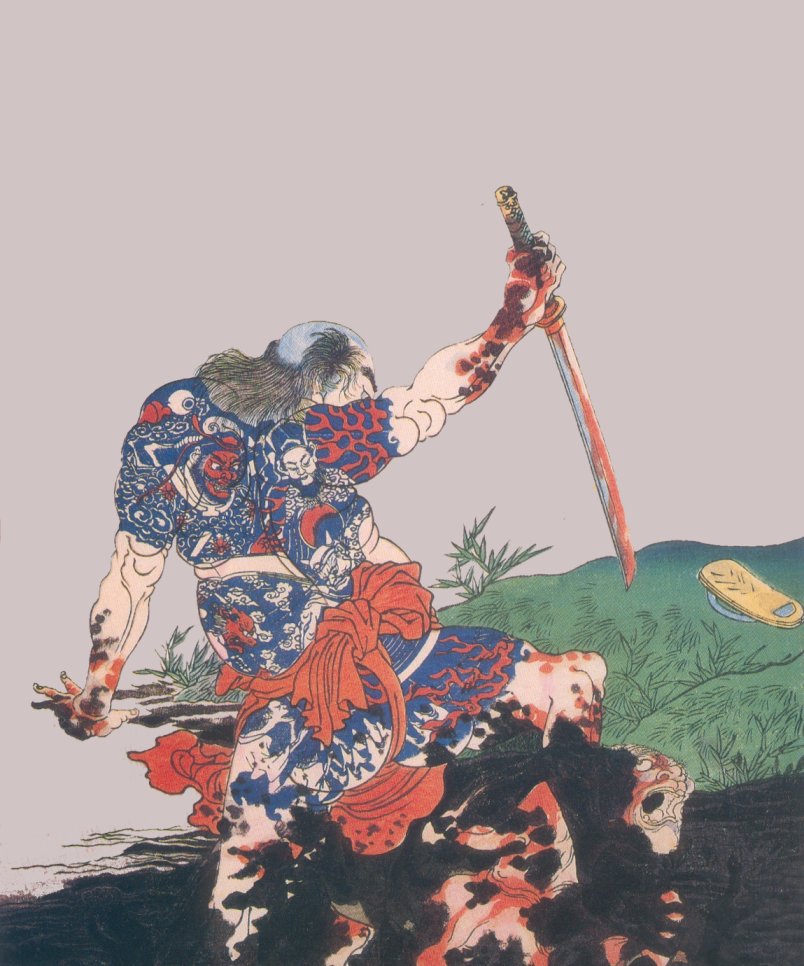
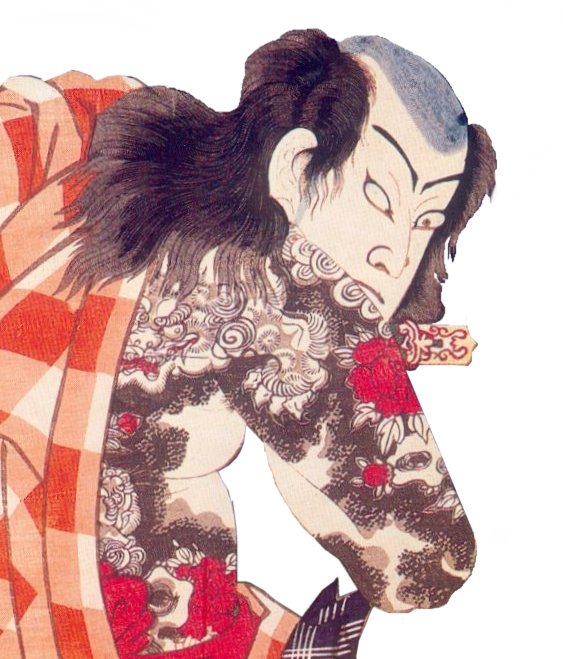
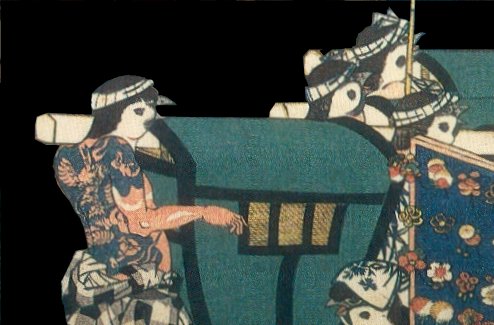
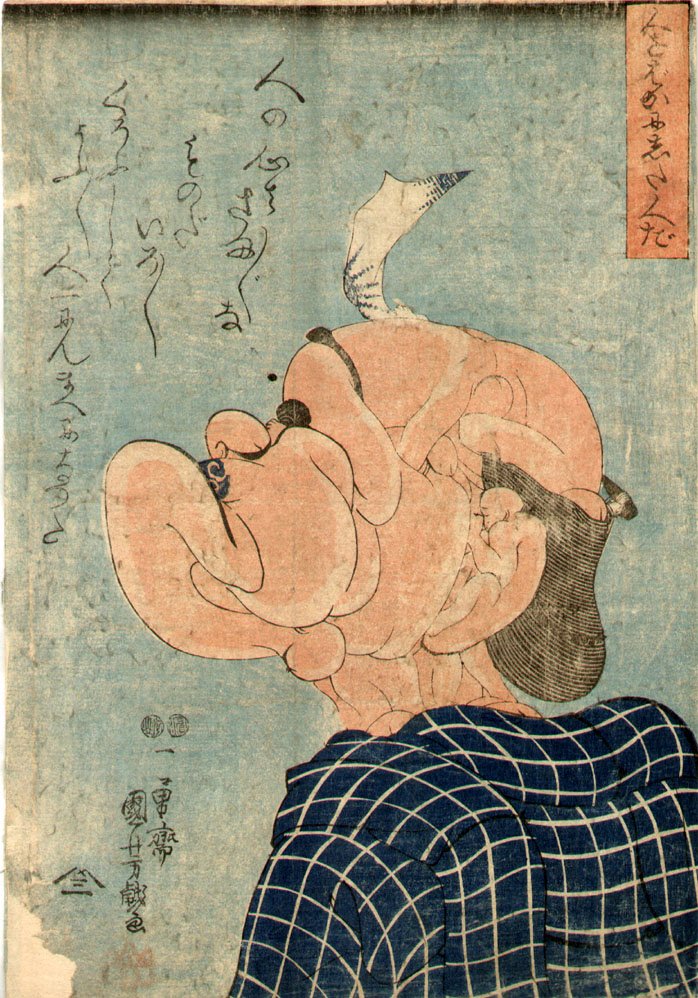
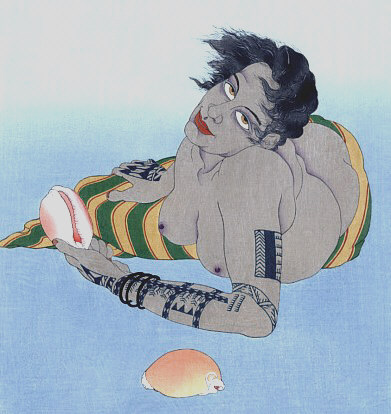
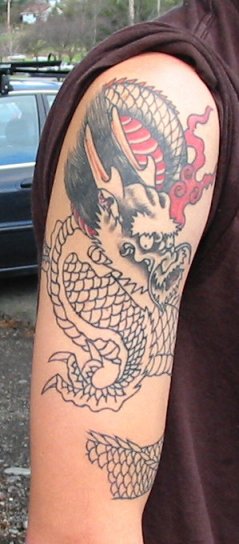
 HOME
HOME